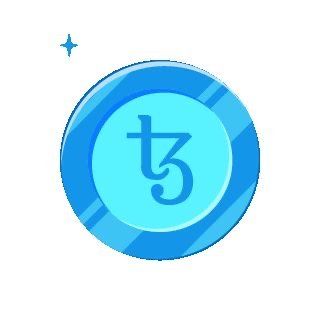Different types of Consensus Mechanisms - Steemit Crypto Academy Season 4 - Homework Post for Task 6

edited with https://www.canva.com
Question 1
What is the difference between PoW & PoS? Advantages & Disadvantages? Which one is better in scaling Capacity? Examples?
Introduction
Greeting @SteemitCryptoAcademy. I am happy to be here again today to learn about the currency of our time. Today, we will be learning about Prove of Work(PoW) and Prove of Stake(PoS). Thank you for this opportunity sir @sapwood.
Let’s dive in right away.
PoW and PoS are crypto currency mining systems for validating transactions. They are consensus mechanisms which make sure only legitimate transactions are added to the blocks
Proof of Work(PoW)

In 2009, Satoshi Nakamoto used the consensus mechanism on the Bitcoin network. However, the theoretical concept was first introduced by Hal Finney in 2004
In general, Proof of Work is a phrase that is used to describe any system that requires computational effort in order to complete a task
With regards to crypto, POW is a decentralized system wherein miners through their computers solve somehow difficult mathematical puzzles with the intention of being the first to complete. This simply means that whoever succeeds to get the right solution first gets the reward in the form of cryptocurrency.
In its simplest, with PoW, the miner solves the puzzle given thereby proving their work to the other mining competitors. Together, they verify the solution if it’s true. If yes, the miner with the first correct solution gets the reward after which a new puzzle is given and the competition starts all over.
With PoW, though difficult to find solutions,it is extremely easy to verify answers to puzzles and they are made public
Therefore, it is but normal to say that every block in a PoW blockchain is a list of solvable mathematical puzzles plus several other bits of data
Proof of Stake(PoS)

With PoS, the miner is selected based on the amount of coins owned. In other words, the new block validation is determined by the largeness of the stake of a person.
With PoS, the miner doesn’t receive a reward. Instead what they do is collect network fees as their reward.
Summarily in Proof of Stake, what the “validators” do is to dedicate their cryptocurrency. Once they do this, they could get lucky to verify transactions in a block thereby collecting the fees as their reward. Note that, the dedicated cryptocurrency must be of reasonable amount. It is this locked up cryptocurrency that is then used to secure the network.
Again, it is worth noting that the network chooses random validators to propose new blocks.
Differences Between PoW and PoS

From the above detailed explanations of PoW and PoS, the differences are clear. Notwithstanding, I’ll still point them out clearly with respect to Energy Usage, Reward, Participation, Security and Mining respectively.
| PoW | PoS |
|---|---|
| PoW requires a lot of energy because of computational work done. That is in solving the mathematical problem. | Energy isn’t actually required. What’s important is the amount of coin at stake. |
| The first to solve the mathematical problem gets the reward in the form of cryptocurrency. | Reward here is network fee collected by the selected validators. |
| To be able to participate, one needs a hardware (computer) as well as a stable energy supply. | All what is needed is tokens to stake. |
| Due to the high computational cost, PoW is secured since the cost of spamming will never be more than the profits from the spamming. To buy the computer as well as the energy is actually a high cost. | With PoS it is actually secured because of the difficulty of an individual to own more than 50% of the total tokens which are staked. |
| Frequency in mining leads to more coins as reward. | Here, coins are not increased as what they get are fee rewards. |
Advantages and Disadvantages of PoW

PoW has several advantages as well as disadvantages. Let’s start with the good side;
Advantages
To begin with, this system can be used to secure an entire network. This is so because with the large number of mining machines competing with each other to solve and get a particular solution, it would require an even larger computational power to alter the network thus making it kind of impossible for individuals with bad faith to manipulate the network.
Again, since PoW requires hard work to do in order to process every transaction , that is solving, a lot of attack risk is reduced.
Because it is financially costly, that is hardware purchase plus electricity fee, spammers as well as other malicious individuals are disincentivized.
The amount used in processing the transaction will no doubt be higher than the spamming amount.Another advantage of PoW is that it is decentralized. This system actually doesn’t rely on a third party for its transactions to either send or receive online money. This alone builds a very transparent network.
Disadvantages
The first drawback is excessive usage of energy. With the extra computational work in solving the puzzles, a lot of energy is used. This energy is actually bad for the surroundings.
Fun fact; Do you know the Bitcoin network alone consumes more energy than Argentina annually?
This alone shows how much energy is actually consumedInorder to use PoW one must have Specialized equipments like a computer so as to optimize processing power. This equally means high cost.
Also, adequate security is assured in PoW only if there’s a large network of competing miners. With a small network, hackers have the possibility of getting a larger proportion of the network's computational power thereby attacking the system.
Lastly, though PoW is considered decentralized, it actually is not. Take for example Bitcoin which is the most decentralized network. The computational power is controlled by three mining pools. It is therefore seen to be mining centralized.
Advantages and Disadvantages of PoS

Just like PoW, PoS has its own advantages as well as disadvantages. The advantages are;
Advantages of PoS
To begin with, PoS is less costly. This is so because no sophisticated equipment like computers are needed since rewards aren’t based on computational power. All what is required is a standard server.
PoS encourages more decentralization since it doesn’t require costly equipment. The more the people, the more decentralized the system becomes.
It is very difficult for malicious individuals to crack the system. This is so because they would need to own a greater share of all cryptocurrency(at least 51%) which is somehow impossible.
Again, PoW is actually faster since all what is needed is cryptocurrency owned
Disadvantages
I’ll begin with the fact that PoS favors the rich. This is so because validation of blocks is firstly based on the amount of cryptocurrency stake. The more one has, the more likely he is to be chosen. On the contrary, those who cannot afford have no chances of being validated hence rewarded.
Again, the security of PoS is not that proven. Given the fact all that is needed is a reasonable amount of cryptocurrency and no computational work somehow means the security can be tampered with even by frequently validated individuals or groups to blocks . More so, PoS is relatively new.
Scaling Capacity

Scaling capacity in clear terms is defined based on the amount of transactions a consensus mechanism can handle over a period of time. That which can perform more transactions has a better scaling capacity.
With respect to PoW and PoS, it is clear from all the points explained above that PoS has a better scaling capacity. With PoS there is actually no computational work needed meaning it is obviously faster than PoW which requires mathematical puzzles to be solved in order for transactions to be approved. Therefore PoS has a better scaling capacity.
Examples of Pos

Bitcoin which is the first cryptocurrency uses PoW. Notwithstanding, several cryptocurrencies use PoS with some like Etherum switching from PoW to PoS. Some examples of cryptocurrency that use PoS are;
Tezos(XTZ)

Image source"
It was the first cryptocurrency which supported the other major cryptocurrencies for staking. It can easily be staked with Binance especially because it requires no staking fee. All that is needed is coins in the Binance wallet. Once one stakes the coins, he automatically earns passive income.
Cardano

Image source"
Cardano’s primary cryptocurrency is “ADA”
Cardano was essentially created because of the drawbacks of PoW precisely the scaling capacity as well as the cost, energy and time limits of PoW. It is confirmed that 71.59% of its cryptocurrency was staked in 2,636 active pools as of June 2021. The approximate value of this is $31.4 billion.
Algorand

Image source"
Algorand actually uses Pure Proof of Stake(PPoS). It has the second highest market cap for coins using the PoS. It is practically impossible to harm the network by small coin owners and on the other hand, large coin owners wouldn’t destabilize the system as the currency’s purchasing power will be reduced and they will be the losers at the end of the day.
Cosmos, EOS, Polkadot, Mina, NEO, bitshare and a lot more have all implemented a version of proof of stake.
Conclusion
Traditional Blockchains like Bitcoin are using PoW. Ethereum which is as well amongst the traditional Blockchains is shifting from PoW to PoS. We have seen how both work, their advantages as well as drawbacks; so I go with the opinion that it is too soon to stand grounds for a particular perfect choice or winner especially as PoS is relatively new.
Cc:
@sapwood
@steemitblog

